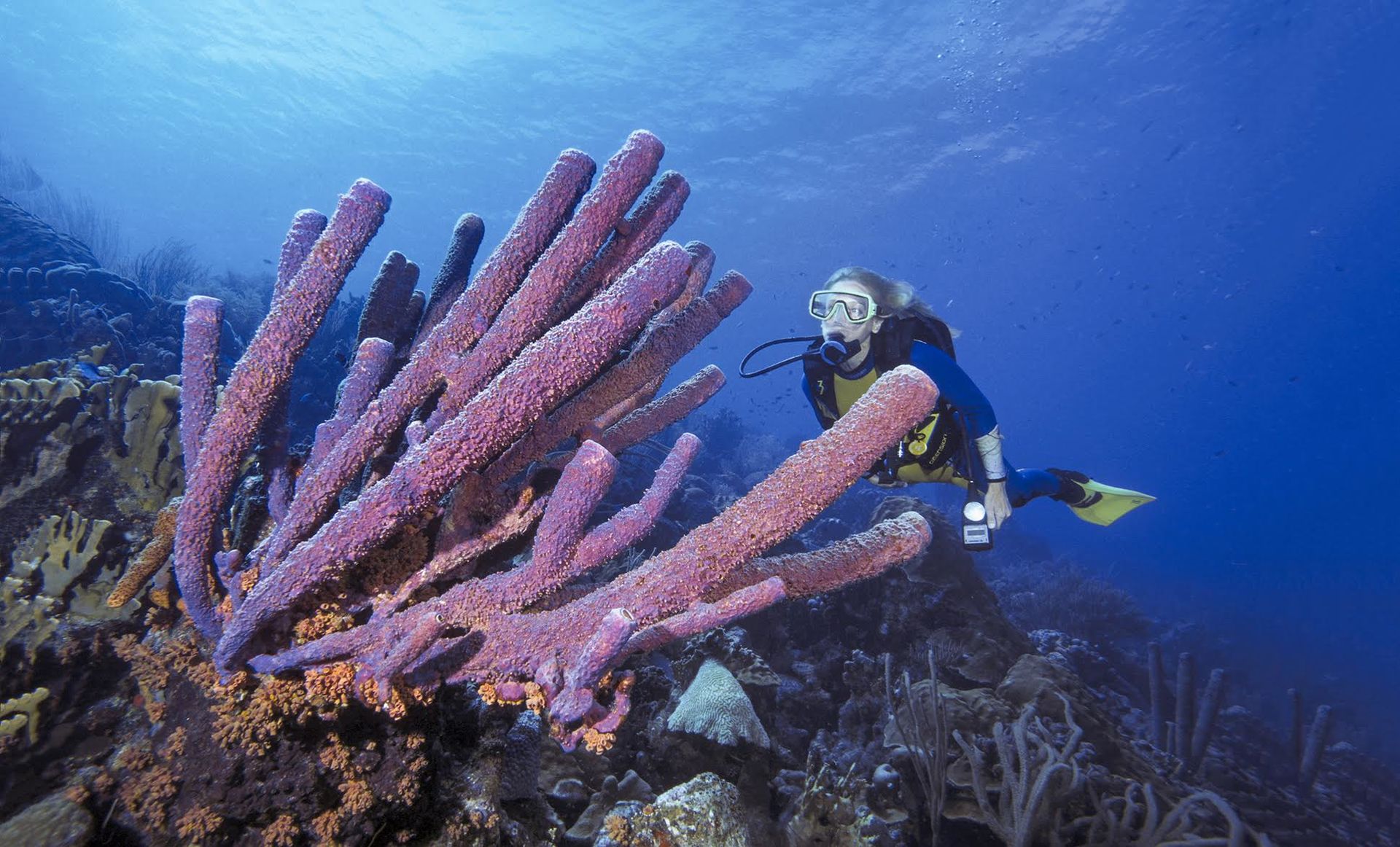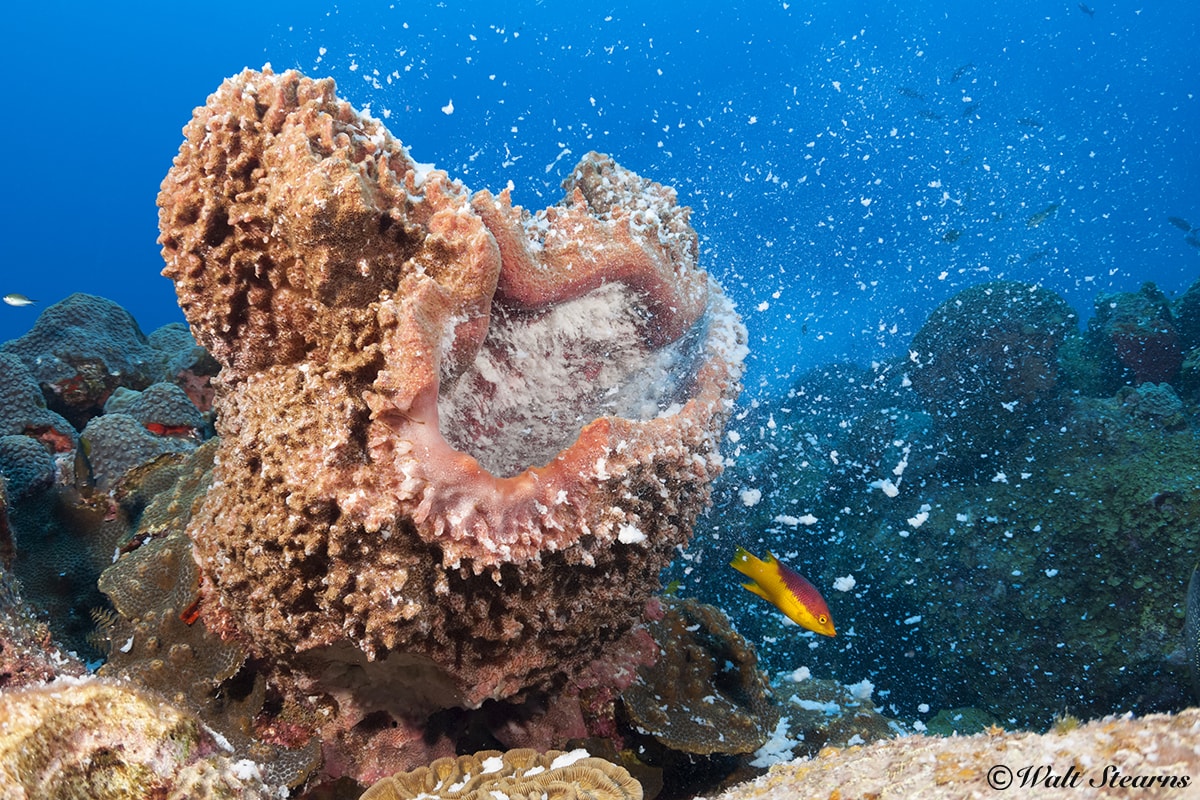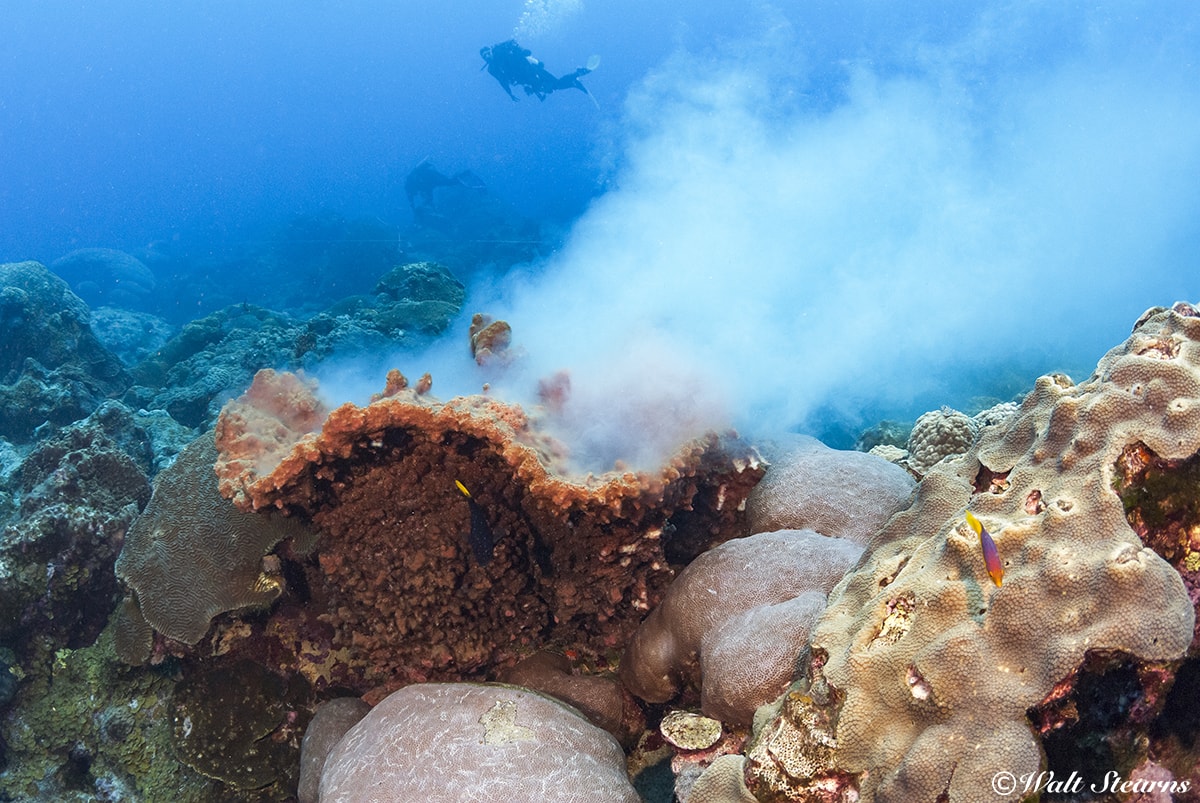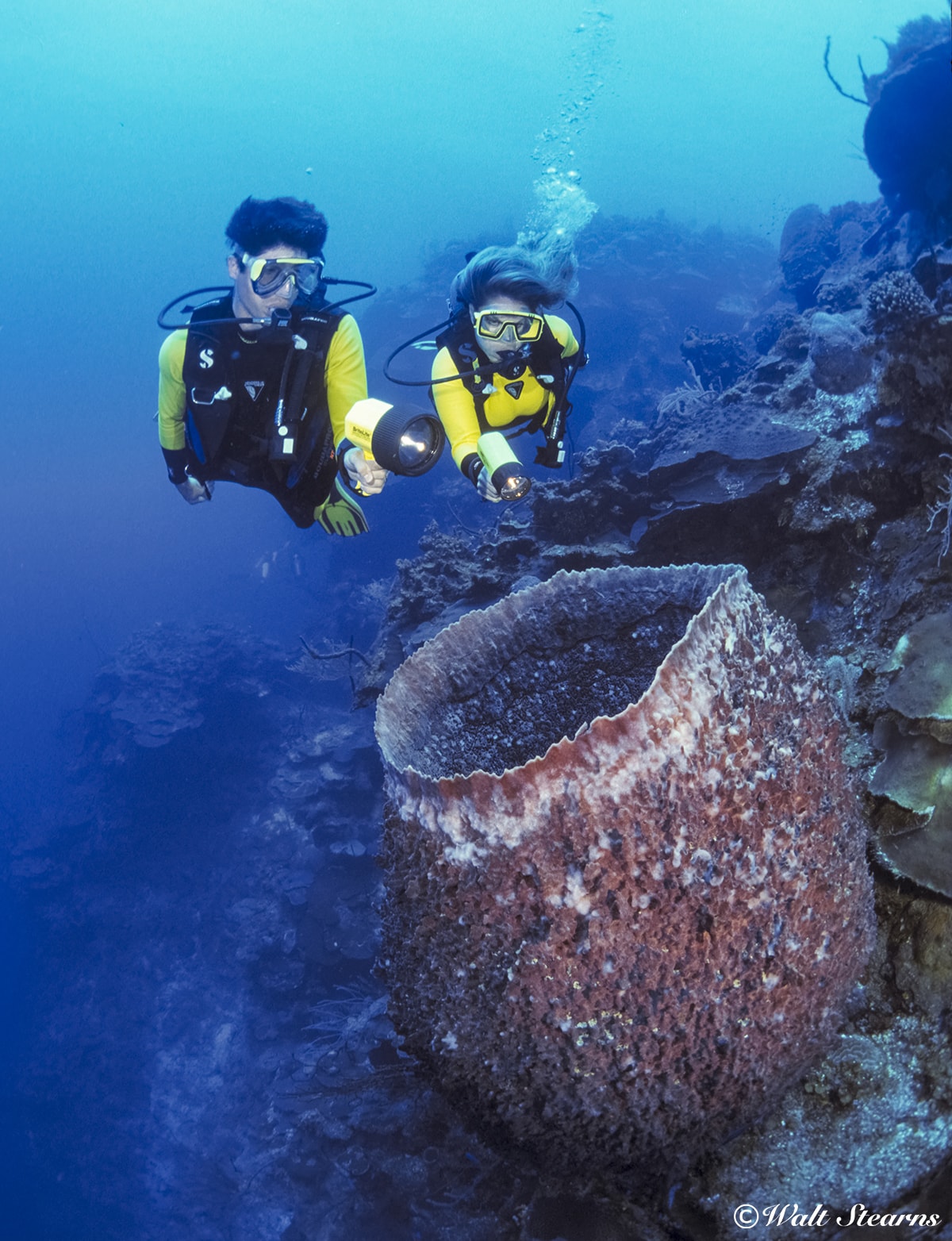
A look at the surprisingly fascinating life of sea sponges
Underwater photographers sometimes focus on a colorful spray of tube sponges or a big barrel sponge, but otherwise, divers don't pay them much attention. But did you know that sponges are some of the most resilient living creatures in the ocean? They've been around for a half-billion years, surviving a dozen planet-wide mass extinctions and outlasted the dinosaurs. They grow at any depth from coastal shallows to the ocean's depths and can live for hundreds of years. Pretty impressive for an animal that can't even run away from danger.

Simple Creatures
Yes, we did say animal. Sponges were once thought to be plants, and it's easy to see why. They have no brain, digestive system, or circulatory network, and they can't move. They just sit glued in place, growing like a colorful vegetable. When chopped into small pieces, they will anchor back to the reef and regenerate. But despite these plant-like qualities, the scientists eventually figured out that sponges are in fact one of the planet's simplest multi-cellular animals. Closer study revealed that these simple creatures have made some fascinating characteristics and adaptions. For starters, sponges are highly efficient filter feeders that don't have to rely on currents to deliver their dinner. Instead, they can generate their own water flow to draw in nutrients from the surrounding water. Studies have shown that sponges can draw in and filter up to 20,000 times their own volume of water in a 24 hour period.

Full of Holes
The scientific classification for sponges is “Porifera,” which means “pore-bearing.” This refers to the many small round openings you will find on the outer surfaces of all sponges. These openings are lined with a unique type of cell known as choanocytes, which uses tiny whip-like flagella to draw nutrient-laden water into and through a network of internal tunnels and canals. Another group of specially-adapted cells within the sponge digest available nutrients from the water, which is then expelling it back through other orifices. Sponges can regulate the flow of water by activating or resting individual flagella. Some varieties have also adapted to take advantage of currents, as they grow in shapes that create areas of low pressure around chimney-like openings, which helps draw wastewater out of the sponge.

Transformational Resilience
Sponges are unique in the animal kingdom because each of its different types of cells can transform and switch tasks when needed. This ability allows even a small fragment of a torn-apart sponge to re-establish itself with relative ease. Yet despite this amazing ability to regrow, sponges are a decorative element of the reef rather than a structural component. Unlike corals, which have hard calcium-carbonate skeletons that are the building blocks of a reef, sponges have fibrous skeletons made of silica, which will rapidly break down and become part of the bottom sediment.

The Real Thing
For centuries, there was a brisk trade in the harvesting of natural sea sponges. Science changed this because the absorbent pads you buy as a cleaning tool are most often a synthetic made from cellulose wood fibers or foamed plastic polymers. Real sponges are still harvested and command higher prices because they are prized for their longevity, softness, absorbance and lack of odor. But don't worry, the colorful varieties that adorn dive sites throughout the Caribbean and other oceans are not threatened by humans.
Of the 5,000 known varieties of sponges, only a dozen are targeted for collection. In addition, commercial sponge divers know to remove only the outermost portion of a sponge, which actually helps the animal regenerate and expand. Studies have shown areas where sponges are harvested actually show an increase in the population. But should you be tempted to try and make your own bath sponges, remember that harvesting not allowed on most reefs. In addition, soaking, curing and trimming sponges are an involved process. Simply pulling one from the water and drying it out will not result in something you'd want in the bathtub.

On the Menu
A sponge may look tasty to humans, but there are a number of things in the ocean that will make a meal out of these living water filters. Sea turtles are a primary culprit, especially hawksbills. But sea urchins, angelfish, filefish and some wrasses are also known to take a bite of sponge from time to time. Since they can't swim away from predators, sponges had to come up with a different strategy to ensure survival. About three-quarters of the sponges, you'll find on the reef use chemical warfare. They transform some of the byproducts of digestion into toxic compounds that are unpleasant or even poisonous to would-be grazers. These defenses aren't a sure thing, as turtles and certain other reef dwellers have built up an immunity to sponge toxins.
That said the chemically-defended varieties fare much better at meal times than do their toxin-free counterparts, which are the targets of the vast majority of feeding activity. To survive, these more tasty varieties rely on proliferation. They usually grow much faster than the toxin-infused species, and can also heal rapidly. So even when torn to shreds by a hungry hawksbill, the scraps of sponge left behind will soon reattach to the reef and get back in the business of growing and filtering.

Toxed Out
Sponges use chemical warfare for more than avoiding predators. Turns out that a toxic nature is also a good way to secure prime real estate on the reef, where there are unseen but constant turf wars between most everything that grows. Many sponges will secrete compounds that discourage corals or other species of sponges from infringing on their territory. Scientists think that some of these “stay off my lawn” compounds are laced with biological agents that could be used in pharmaceuticals treating certain types of cancerous tumors. Other derivatives may prove effective in treating diseases such as arthritis, heart disease and AIDS.

Making Babies
Sponges are good at making more sponges, and they don't necessarily need a partner to procreate. Most species can replicate asexually by budding. But unlike terrestrial plants that bud, sponges don't separate their genetic copies by dropping the new growth from the original. Instead, they continue to live together, which results in the cluster-like sponge formations familiar to most divers. But even though they can't get up off the reef and look for a date, some sponges are still able to make babies the partnership way from eggs and sperm. Much like corals, groups of sponges will coordinate the release of egg and sperm clouds into the water column, allowing the currents to bring things together for fertilization. The tiny larvae this produces drift for a while then settle in to create a whole new sponge colony.
Colorful Finds
A reef covered in a vase, tube, barrel, elephant ear and rope sponges displays the full-color spectrum, from red, orange and yellow to green, indigo and deep purple. The vibrant, multi-hued scene this creates is a wide-angle photographer's delight. Different sponges also provide critter spotters with a wealth of opportunities. A wide variety of small fish and invertebrates may seek shelter in a hollow sponge, and sometimes take up permanent residency. A closer look into a cluster of tube sponges may reveal a group of gobies hanging motionless and blending in, while a peek inside a vase sponge could reward with a group of snapping shrimp. The larger barrel sponges that usually grow in the middle and deeper depths may also hold more surprises, as certain creatures that hunt at night may duck inside the sponge during daylight hours. So don't be surprised if you encounter the toothy grin of a moray eel when you peek inside.
Sponges may not be the most exciting thing you will discover on the reef, but for divers who take a closer look, these fascinating and ancient creatures can add an extra dimension to the diving experience. Something to keep in mind the next time you come across one of the oldest animals on the planet.